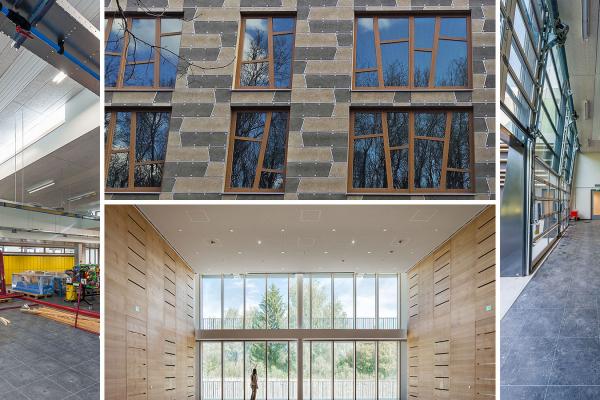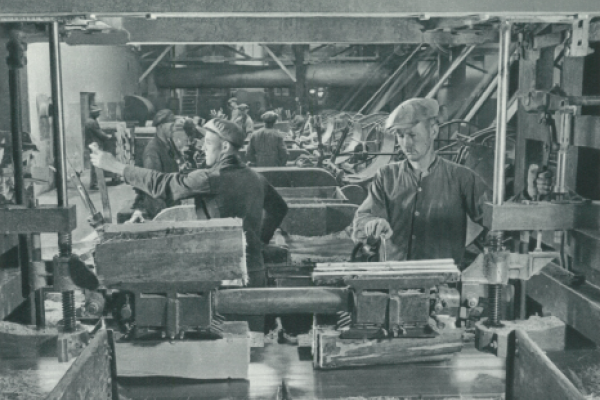Wood, mineral binder, and water are the essential components that ensure the outstanding sustainability of every Heraklith® product. But the wood wool, which gives Heraklith® insulation solutions their characteristic appearance, has additional benefits. It provides comfort through better acoustics, an optimal indoor climate, and outstanding aesthetics.
Wood is still one of the most popular materials in interior design because of its natural feel, colour tones, and warmth. It creates a feeling of comfort and security. Wood can also positively impact areas beyond residential and commercial spaces. Even underground car parks can benefit from the magic of wood and wood wool.
Wood wool works
Heraklith® products utilise the positive properties of wood in the best possible way to benefit users. When mounted on walls and ceilings, the insulating products positively impact the indoor climate, acoustics, and aesthetics, removing the gloom and discomfort from garages and basements.

Pleasantly muted acoustics
The wood wool in Heraklith® insulation products acts like a breakwater against sound on hard concrete surfaces. The finely structured wood wool absorbs parts of the sound waves and reflects them much less. Unpleasant reverberation from the slamming of car doors or the clacking of shoe heels, for example, is effectively contained. The result is pleasantly muted room acoustics that make you feel good.
Optimised room climate
Heraklith® panels are particularly low-emission and do not pollute the room air with harmful substances. They utilise the moisture-regulating effect inherent in wood by nature. The wood wool fibres absorb and store water when humidity is high. If the room air dries considerably, they slowly release the stored moisture again, gently regulating the room humidity. This property is very welcome in storage rooms for sensitive treasures.


Unrivalled aesthetics
Heraklith® wood wool panels create surfaces that look warm and inviting. The lively, natural organic structure of the wood fibres enhances rooms. It produces an exciting contrast to hard materials such as steel and concrete, which otherwise dominate the impression of underground car parks, parking decks, and basements.
The option to have the wood wool surfaces of many Heraklith® panels coloured ex-works or having them subsequently coated in practically any colour also opens up limitless design possibilities. It not only makes it possible to do away with the often uninviting overall impression of an underground car park but also gives planners the freedom to consistently continue the design language from the interior of the building and thus give arrivals an appropriate welcome.
In addition to their core tasks of thermal, acoustic, and fire protection, Heraklith® panels can be used specifically to increase the well-being of people in a building thanks to the unique properties of wood wool.
These features make Heraklith® wood wool panels more than purely functional insulation products and explain why Heraklith® has been one of the most popular brands in the building and living sector for over 100 years.
Related news

12.06.2019
Three important Heraklith® Wood Wool projects
Three important new examples of how Heraklith® Wood Wool panels have been creatively used in the construction of new schools are now available in the Heraklith® library of case studies.

23.03.2022
Want to improve productivity? Then better soundproofing could be what you need
Heraklith® wood wool panels offer an effective solution for improving acoustics and deadening sound

20.03.2018
Heraklith celebrates 110th anniversary of wood wool boards invention
Wood wool boards were officially “born” with the filing of Austrian patent no. 37223 by Mr. Robert Scherer in 1908.